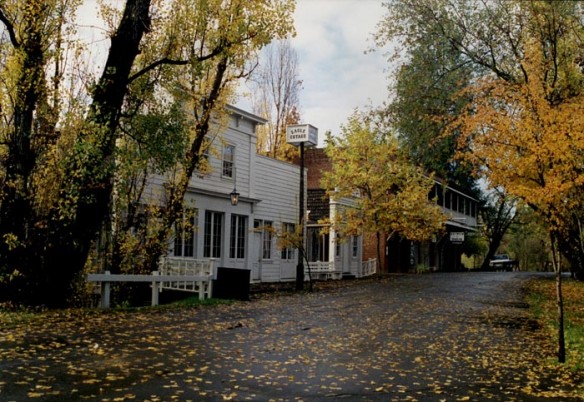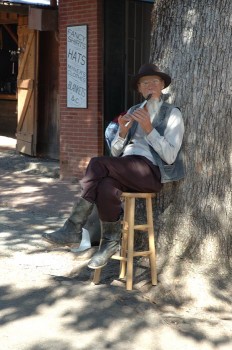Columbia
Cost: Free
Columbia, CA 95310
209-588-9128
http://www.parks.ca.gov/columbia
Columbia is located just off Highway 49 on Parrotts Ferry Road. Columbia is well known for the part of town known as Columbia State Historic Park. This was the center of Columbia during the Gold Rush. In 1945 the State Legislature recognized an opportunity to preserve a typical Gold Rush town as an example of California’s most colorful era in American History. Known as the best preserved Gold Rush town in California, Columbia is where you don’t just view history, you experience it.
Knowledgeable docents staff the park museum and are dressed in circa 1850-1870 costumes. The town also hosts several special events throughout the year which bring even more of its history to life including candlelight processions at Christmas, an old-fashioned Easter Parade, Fourth of July celebration, and a fall Fiddle and Banjo contest and much more. Admission is always free!
On March 27, 1850, Dr. Thaddeus Hildreth, with his brother George and a handful of of other prospectors, made camp near what is now Columbia State Historic Park. They found gold and miners streamed in to share the wealth. Before the month was out, Hildreth’s Diggin’s (a tent and a shanty town housing several thousand miners) was created. Its original name was soon changed to American Camp and then, because that name had already been taken, the name was again changed to Columbia and was referred to as the Gem of the Southern Mines.
That first year was almost the last for Columbia. Water, indispensable for mining placer gold, was in short supply. The area virtually had no natural streams, only gulches carrying run-off from rain and snow. In June 1851, the Tuolumne County Water Company was formed to bring water into the area. The company rates were high so the miners formed the Columbia and Stanislaus River Water Company in 1854 to build a 60-mile aqueduct to supply the mines. The new system was not fully completed until 1858 when the more easily worked gold deposits had been exhausted and the miners were beginning to move out. Because of this, the Tuolumne County Water Company managed to acquire the new system for $150,000, which had cost over $1 million to construct.
Meanwhile, Columbia’s tents and shanties gave way to more permanent structures. Streets were laid out and by the end of 1852, more than 150 stores, shops, saloons, and other enterprises were going strong. There was also a churches, a Masonic Lodge, and even a branch of the Sons of Temperance.
In 1854, a fire, the scourge of many mining towns, destroyed everything in Columbia’s central business district except for the one brick building. The town was rebuilt using locally produced red brick, iron doors, and window shutters for fire protection.
In July 1855, the New England Water Company provided piped water for firefighting and domestic use. Seven cisterns, each with a capacity of about 14,000 gallons were built under the streets. Some still store water for firefighting. The early pipes were used until 1950 when the state installed a new water system.
In 1857, another fire destroyed all the wood-frame buildings and a couple of brick buildings in the business district. In 1859, the volunteer fire department acquired the Papeete, a small fancifully decorated fire engine. A year later they added the Monumental, a larger hand pumper.
After 1860, the easily mined placer gold was gone and the town began to decline. In the 1870s and 1880s, many vacated buildings were torn down and their lots mined for gold. The population dipped from about 6,000 to less than 500.
Columbia survived, but did not prosper for many years. In the 1920s, consideration began for the inclusion of Columbia in California’s State Park system. In 1928, Frederick Olmstead spoke favorably about the inclusion in his famous survey of possible park sites. Another attempt in 1934 was unsuccessful. The town was quite run-down and many structures had become public nuisances and were falling down. In 1945, the effort was successful and $50,000 was appropriated to be matched by public subscription to acquire the land and buildings. Thus was the Gem of the Southern Mines re-born!

Join our list to stay up to date on specials and events in Tuolumne County!



